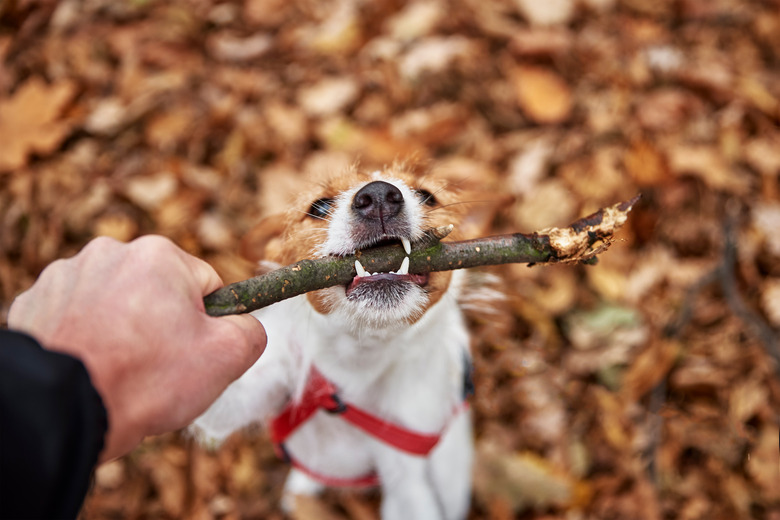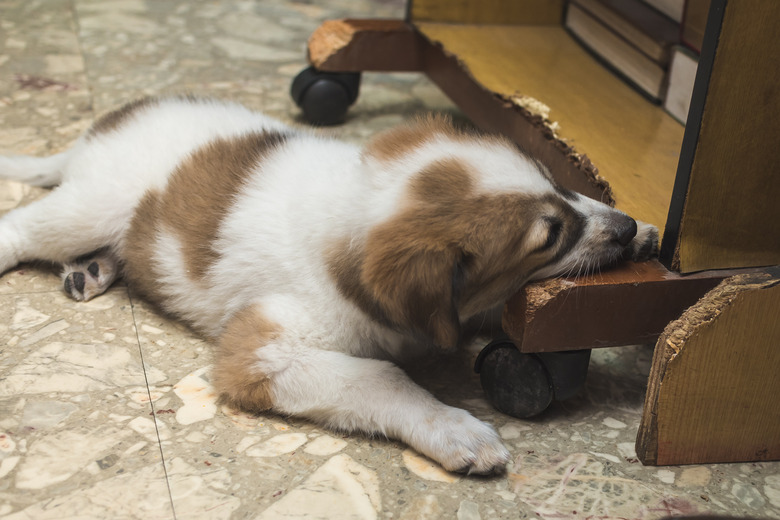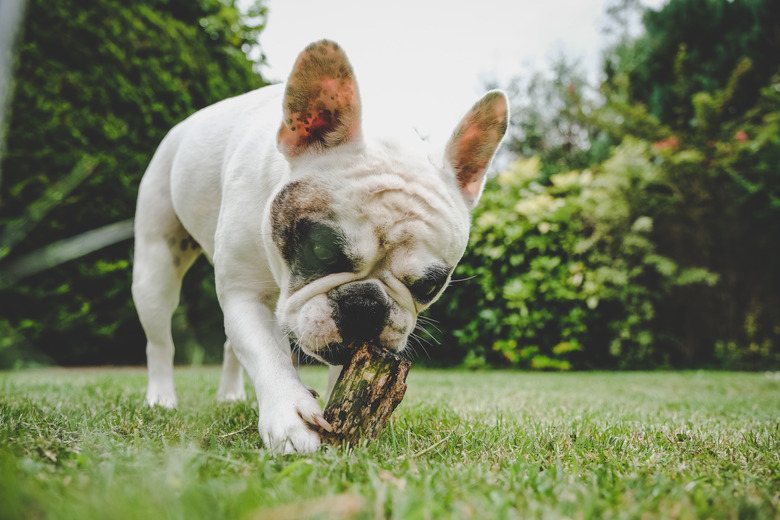What Are The Dangers Of A Dog Chewing On Pine Wood?
Chewing pieces of wood is a classic canine pastime often encouraged by owners who throw sticks for their pets to fetch. While this activity may seem relatively harmless, it can be dangerous for your pet depending on the type of wood you're using to play with.
Take pine, for example. Depending on where you source pine wood from, it can contain natural and artificial toxins that could be hazardous to your dog. There is also a risk of internal injury from ingesting broken shards of wood, which can have life-threatening consequences. Learn about the dangers associated with your dog chewing on pine wood.
Pine toxicity in your dog
Pine toxicity in your dog
Norfolk island pine trees appear naturally in temperate forests and are cultivated throughout the United States. They are grown for landscaping purposes and are commonly sold as Christmas trees.
With its fragrant pine needles, it's a popular choice for many households during the holiday period, but a pine Christmas tree can cause problems for your dog's health. While the exact mechanism of toxicity is unknown, some dogs develop an upset stomach after eating pine wood or pine needles. The poison is not considered fatal, although vomiting, diarrhea, and lethargy may follow ingestion, so it's definitely an unpleasant experience for both you and your dog.
Your dog may be poisoned by chemicals
Your dog may be poisoned by chemicals
The wood used to build outdoor structures, furniture, and other objects may be treated with chemicals to repel the elements. Pieces of treated lumber can contain toxic arsenic compounds, which are poisonous to both dogs and humans. Chewing the wood is certainly dangerous, but your dog can even become ill by eating food or drinking water from the surface. Common signs of arsenic poisoning in dogs include:
- Lack of stability while standing or walking
- Excessive salivation or drooling
- Severe digestive distress
- Sensitivity to touch or pain in a dog's mouth or gastrointestinal tract, prompting aggressive reactions
- Loss of consciousness
It's important to regularly seal decks that have been treated with toxic chemicals to prevent arsenic from leaching out. Do not burn, saw, or power wash the material around the home because the dangerous chemicals could remain in your dog's environment. And it's not just indoors. Common garden fertilizers and pesticides are toxic to dogs, causing an upset stomach if your dog ingests small quantities and more serious dog health problems if ingested in larger quantities.
The risk of physical injury to your dog
The risk of physical injury to your dog
As your dog gnaws away at a stick or chunk of wood, whether from a pine tree or treated wood, they will invariably break off tiny pieces. These fragments pose a serious health hazard, as they can become lodged inside their throat or stomach. In some cases, the splinters puncture the esophagus or digestive tract, which can be deadly without prompt medical intervention Take your dog to the veterinarian immediately if you notice symptoms of internal injury, which could include:
- Bleeding from the mouth, including the gums or tongue
- Labored breathing accompanied by gagging or coughing
- Blood in your dog's stool
- Whimpering, agitation, or other signs of pain with no discernible cause
- Loss of appetite and/or desire to drink
Are pine cones bad for dogs?
Are pine cones bad for dogs?
Yes, pine cones are bad for dogs if they eat them. Eating pine cones and pine tree needles can cause a number of problems for dogs and dog owners. While they don't contain toxins, it doesn't mean they're safe for your dog to chew or swallow. Since they have sharp edges, they can get stuck in your dog's stomach, causing serious intestinal blockages, or they can get stuck in your dog's throat. Pine cones may seem like a fun, natural alternative to dog toys if your dog picks one up while you're both out and about, but if you see one in your dog's mouth, you should take it away.
Preventing wood injuries in dogs
Preventing wood injuries in dogs
Encourage your pet to play with safe toys that are designed for dogs. There are so many different types of dog toys available, and different dogs enjoy different toys. To find the perfect one for your dog, try a few different types to find the ones they enjoy. Chew toys, rubber bones, and balls are just a few of the many options available at your local pet store. Remove fallen sticks and branches from your yard on a regular basis to keep your dog from getting back into their old habit.
People and some animals can develop compulsions to nibble on nonfood objects. This condition is called pica. "Pica does occur in dogs but a nutritional deficiency is not a cause for pica in dogs," says Dr. Jordan Kautz, a veterinarian at Crestview Veterinary Clinic in Austin, Texas. "Horses can have nutritional pica and cats can have anemia, causing pica, but dogs will not."
While chewing on random objects is a normal phase of development for puppies and dogs, the habit can become ingrained to the point of dysfunction. It can also stem from infections, hormonal imbalance, and parasites as well as stress and neurological disorders. If your dog displays an insatiable compulsion to consume wooden objects or any other nonfood object, it's important to get them to the veterinarian for a checkup.
The bottom line
The bottom line
Discourage your dog from chewing on pine or wood in general. Pine cones and pine needles can get stuck in your dog's throat or stomach. Pine is a soft wood that can splinter under a dog's teeth and cause a blockage. Also, wooden furniture is often treated with chemicals that can make your dog sick. give safe dog chew toys instead of wood or sticks.


